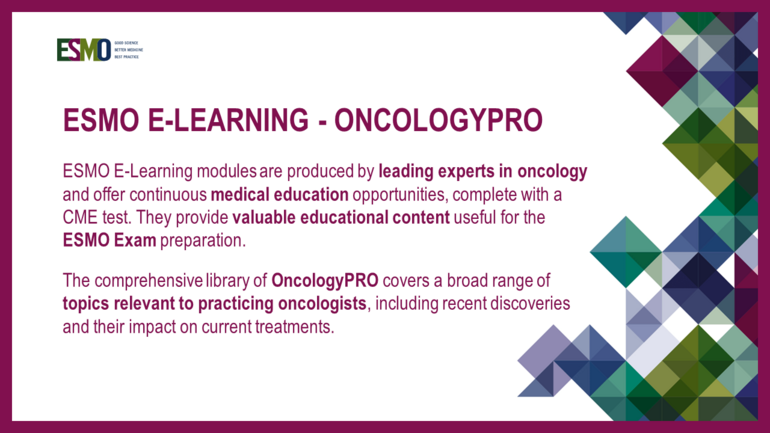This module is an extensive update of a previous ESMO E-Learning module on the management of patients with diffuse large B-cell lymphoma (DLBCL), that provides a comprehensive overview of standard of care and treatment developments in the last few years, mainly related to the introduction of CAR T-cell therapy.
The author emphasises that DLBCL is the most common Non-Hodgkin lymphoma (NHL) and describes the following: the risk factors; diagnosis; biologic diversity; classification; prognostic scores; biological principles and clinical associations of ctDNA, treatment for limited stage disease; outcomes in younger patients; R-CHOP curability in different DLBCL subgroups; CAR T-cell therapy results in high risk DLBCL; treatment in subgroups of patients with MYC-DH/TH lymphoma, elderly and patients with organ dysfunction, as well as in very elderly; the risk of CNS disease in patients with aggressive B-cell lymphoma; secondary CNS lymphoma, and specific aggressive B-NHL variants.
Furthermore, the author elaborates the limits of chemotherapy and of chemotherapy combinations with novel agents, highlights the findings from the trials in patients with previously untreated DLBCL, provides an overview of alternative approaches and elaborates unmet needs in DLBCL, tackles chemotherapy outcomes in relapsed/refractory DLBCL in the rituximab era and of salvage treatment in DLBCL, as well as elaborating which patients are transplant-eligible, and what the role of autologous stem cell transplantation (ASCT) is in relapsed DLBCL.
A big portion of the module is dedicated to the results from trials with CAR T-cell therapy in second-line treatment, treatment selection in ASCT or CAR T-cell eligible patients, characteristics of patients with durable remissions under CAR T-cell therapy, limitations of CAR T-cell therapy, and to the results from a study in patients eligible for a second transplant.
The author underlines that the potential for curative therapy drives decision making, clear standards for relapsed/refractory DLBCL in case of patients eligible for salvage /ASCT or CAR T-cell therapy, and that new standards for patients’ ineligible for ASCT/CAR T-cell are evolving. The author also underlines the challenges in terms of optimising standards when integrating novel therapies and developing new agents.


